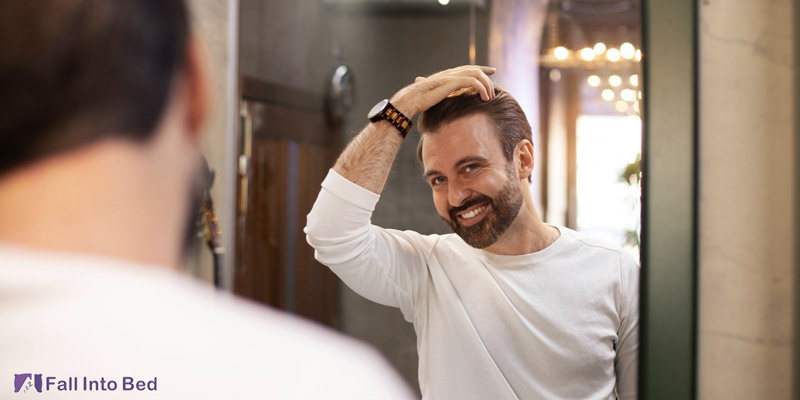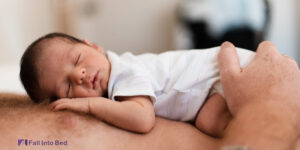One of the challenges you may face after a hair transplant surgery, is your sleep. Unfortunately for the first few weeks you can’t just throw yourself into bed and sleep however you please. You should keep the transplanted area safe safe and clean.
So, in this article we’ll talk about everything you need to know about your sleep after hair transplant, from sleeping positions to hygiene tips.
What is hair transplant surgery?
A hair transplant is a medical procedure where a doctor takes hair from a part of your head where it’s growing well (donor site), and moves it to a balding or thinning area (recipient site). This helps to make the thin area look fuller with new hair that grows naturally over time.
There are two main techniques for hair transplants:
- Follicular Unit Transplantation (FUT): The doctor removes a small strip of scalp from the donor site. This strip is then divided into tiny groups of hair follicles, which are implanted into the thinning or balding area.
- Follicular Unit Extraction (FUE): Instead of removing a strip of scalp, the doctor extracts individual hair follicles directly from the donor site. These follicles are then implanted into the recipient site one by one.
Both methods aim to provide a natural look, as the transplanted hair will grow just like the rest of your hair. Over time, this can significantly improve the appearance of thinning or balding areas, making the hair look fuller. The results are usually permanent, offering a long-term solution to hair loss.

When can you sleep normally after the treatment?
Day 0-10: Sleeping on Your Back
It is very important to avoid putting any type of pressure on the transplanted area. The best positions and tips during the first few days are:
- Sleep on your back; this way the transplanted area can be unaffected and heal properly.
- Use a pillow to support your head; use a pillow behind your head to support your neck and keep your head elevated. Elevation can help reduce swellings and disrupting the grafts.
- Use travel pillow; A travel pillow around your neck can provide additional support and prevent your head from rolling to the sides, ensuring you maintain the correct sleeping position throughout the night.
Day 10-14: Transitioning to Side Sleeping
As the transplanted area begins to heal, you can slowly start changing your sleeping position from the back to sides:
- Sleep on your side; you can start sleeping on your side, but avoid putting direct pressure on the transplanted area. Use pillows to support your body and keep your head in a stable position.
- Pillow Arrangement; Place a pillow between your knees to align your spine and use another pillow to support your arm. This will help you maintain a comfortable side-sleeping position without rolling onto your stomach or the transplanted area. These extra pillows also prevent you from getting lower back pain due to spine misalignment.
Day 14 and beyond: going back to Normal Sleep Positions
By this stage, most of the initial healing should be complete and this allows you to slowly go back to your routine sleeping positions:
- Sleep in Any Position; you can continue to sleep in your preferred positions, including on your back, side, or stomach. However, it is still advisable to be cautious and avoid applying excessive pressure on the grafts.
- Avoid Face-Down Sleeping; avoid sleeping face down until at least 14 days have passed to ensure the grafts are not damaged.

Best positions to sleep in after a hair transplant
As it was mentioned, sleeping on the back is the best sleeping position for the first week of your transplant as it helps you to keep the transplanted area out of touch. It’s important to use extra pillow to elevate your head. Travel pillows can be a very good help in this matter.
You can place another pillow under your knees to keep your spine aligned and prevent any lower back pain.
However, this position is not recommended for people with breathing problems during sleep, since it narrows the airways and increases the symptoms.
How long does a hair transplant surgery take to heal?
The healing process usually involves several stages:
For the first few days (day 0-3) you might experience some swelling, redness and discomfort in the transplanted and the donor area. After this phase, the early healing phase begins that contains about 2 weeks. During this time, swelling and redness starts to slowly go away and the scabs begin to naturally fall off.
From week 2 to month 1-2, the grafts are securely in place. However, it’s common for the transplanted hair to shed at this time. They call it ” shock loss”. But not to worry, new hair growth will begin soon after.
After these three months, new hair growth will become noticeable and the redness and sensitivity should be significantly reduced by now. And after 6 to 12 months, you experience full healing and you can see the final result.

Sleep hygiene after hair transplant
1. Keep your head from hitting the bed
Hitting your scalp to the headboard or any other part of the bed has a negative impact on your recovery and final result. You can place a pillow between the headboard and your head to protect your grafted area.
2. Get a lot of rest
Getting good rest after your surgery can have a positive effect on your recovery.
3. Wear your headband
Some surgeons will give you a headband to avoid swelling for the first few days. It’s essential to wear the headband during sleep. Make sure you wear in correctly so it doesn’t come off during the night.
FAQs About Sleeping After Hair Transplant
How Long Do I Need to Sleep in an Elevated Position?
After the first 10 days, you can start sleeping on your side. But you should still protect the transplanted area to not feel any pressure.
how long to sleep with neck pillow after hair transplant
Neck pillows or travel pillows help you to keep the transplanted area away from touching anything and it’s usually recommended during the first 10 days after the surgery.
When Can I Resume Normal Sleep Positions?
You can resume your normal sleep patterns including your sleep position 2 weeks after the surgery.








